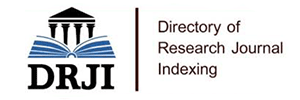
Journal Basic Info
**Impact Factor calculated based on Google Scholar Citations. Please contact us for any more details.Major Scope
- Chemotherapy and Radiotherapy
- Palliative Care
- Prostate Cancer
- Colorectal Cancer
- Lymphoma
- Kidney Cancer
- Hematology
- Gastrointestinal Cancer
Abstract
Citation: Clin Oncol. 2017;2(1):1205.DOI: 10.25107/2474-1663.1205
Current Diagnosis and Management of Pancreaticoduodenal Injury: A Concise Review
Xinlong Dai, Cheng Lu and Wentao Gao
Department of Pancreas, The First Affiliated Hospital with Nanjing Medical University, China
*Correspondance to: Wentao Gao
PDF Full Text Review Article | Open Access
Abstract:
Owing to the proximity of the pancreas and duodenum, the pathogenesis, diagnosis, and management of pancreaticoduodenal injury, while being distinct are all still interrelated. While management of pancreatic injury is related to injury classification, which may vary greatly from non-surgical intervention, operative therapy, or pancreaticoduodenectomy (PD), identification of pancreatic duct injury is the top priority. Although Magnetic Resonance Cholangiopancreatography (MRCP) and Endoscopic Retrograde Cholangiopancreatography (ERCP) are used as diagnostic modalities for pancreatic duct evaluation, sphincterotomy or stenting by ERCP for duct injury are still controversial. Non-surgical management is recommended for patients that do not have duct injuries. Once duct injury has occurred, appropriate debridement, resection, and reconstruction should be considered. Damage Control Surgery (DCS) is an option for critically ill patients concurrently with appropriate initial treatment and delayed reconstructive procedures. Decisionmaking of duodenal injury also depends on injury classification, and the consensus is primary repair with adequate drainage in case of perforation. Combined pancreaticoduodenal injury is associated with high morbidity and mortality. The effective prevention for pancreaticoduodenal injury-related complications are significant including delicate operation, precise hemostasis, thorough irrigation, and appropriate surgical options.
Keywords:
Pancreaticoduodenal injury; Diagnosis; Operative management; Magnetic resonance cholangiopancreatography; Endoscopic retrograde cholangiopancreatography
Cite the Article:
Dai X, Lu C, Gao W. Current Diagnosis and Management of Pancreaticoduodenal Injury: A Concise Review. Clin Oncol. 2017; 2: 1205.













